20 Minutes With John Duchowski
Rachel Fowler, Managing Editor | TLT 20 Minutes September 2017
This corporate director R&D Filtration for the HYDAC FluidCareCenter® recommends a new approach to filtration and separation processes—one that extends beyond current models.
JOHN DUCHOWSKI - The Quick File
Dr. John K. Duchowski received his bachelor’s of science degree in chemistry from Simon Fraser University in Vancouver, British Columbia, Canada. He received his doctorate in physical chemistry from Carnegie Mellon University in Pittsburgh, Pa. Previously he worked as a principal scientist and vice president of technology in the Machinery and Equipment Division at Pall Corp. He’s currently the corporate director R&D Filtration at the HYDAC FluidCareCenter® GmbH in Sulzbach, Germany. Dr. Duchowski is an STLE Fellow and holds the society’s Certified Lubrication Specialist™ (CLS), Certified Oil Monitoring Analyst I™ (OMA I) and Certified Oil Monitoring Analyst II™ (OMA II) certifications.
Dr. John Duchowski in front of the ESD test stand. (Photo courtesy of Barbara Omlor.)
TLT: Can you tell us how you became an STLE member?
Duchowski: I became an STLE member when I attended my first STLE Annual Meeting in Calgary in 1993. I was working for Pall Corp. at the time, and Pall was very active in STLE, usually sending two or even three representatives to the annual meetings. In Calgary I had the great fortune of meeting someone who became my STLE mentor and long-time friend, Dr. George (Wojtek) Staniewski. Having just started my industrial position a year earlier, I was in absolute awe of the presenters and the high level and content of presentations. I fell in love with the general atmosphere of the meeting—everyone being so supportive, friendly and helpful.
TLT: What has been the most rewarding part of your STLE membership?
Duchowski: This is a very hard question because there are many. Having to pick one, I would most definitely say it’s the people I met through these 24 years, with many of whom I formed very profound and long lasting Friendships. Yes, I would like to emphasize that typing
Friends with a capital F is not a typing mistake; it really is how I feel about the Friendships we have formed.
If I were allowed to pick the second part, it would be the knowledge of the applications and their related issues that have been instrumental in helping me and my career grow. We have certainly discovered and carried out many outstanding, highly interesting and very intricate projects, many of which have led to discoveries of a rather fundamental scientific nature as a result of these interactions.
TLT: What can you tell us about your position/career at HYDAC?
Duchowski: I have now been with HYDAC for 12 years, which, in conjunction with my previous life, marks this the quarter centennial year of my involvement in the industrial hydraulic and lubricating fluid treatment applications. I say treatment rather than filtration because it really is a far more encompassing discipline than mere removal of particles from industrial fluids. My career at HYDAC has been most rewarding because, in a unique way, it has allowed me to combine what nearly amounts to purely academic research with the development of well-defined technologies and products destined for commercial deployment with hands-on installation and evaluation of these technologies at select customer sites in real applications. I don’t think it can get any better than that!
All these aspects make my work highly interesting, very challenging, highly innovative and sometimes, yes, even risky—but at the same time great fun! I can honestly say that in my 25 years in this field, I have never had the same day twice. If permitted, I would like to credit and say a big thank you to our senior management, particularly Herr Dr. Werner Dieter, whose foresight, support and understanding of my sometimes crazy ways have allowed me
to go where no man has gone before.
TLT: What has been the most interesting discovery over the course of your career that your research has revealed?
Duchowski: This is without a doubt the elucidation of the fundamental physical processes that are responsible for the phenomena of electrostatic charging (and discharging) (ESC/D) of filter elements installed in the industrial hydraulic and lubricating systems (
see Figure 1). In order to completely understand and delineate the origins of this effect, we had to arrive at a detailed understanding of the complex interplay between the oil and additive chemistry, the filter element construction materials and the operating conditions. It was definitely not a simple process to elucidate and took years of complex experiments both in the lab and in the field to characterize fully.
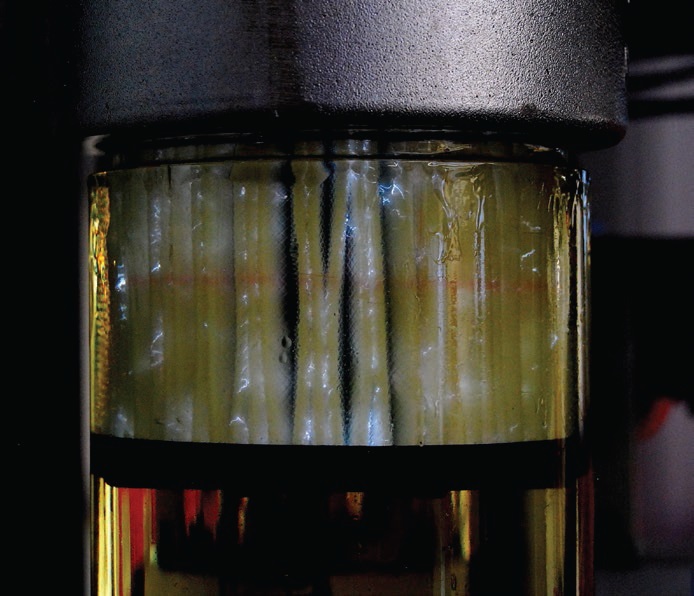 Figure 1. Electrostatic discharges (arcing) in a filter element.
Figure 1. Electrostatic discharges (arcing) in a filter element.
Among other things, it also required the development of highly specialized measurement tools and techniques as these were not at all available through the regular laboratory instrument suppliers. Everything had to be thought out, conceived, built and tested entirely by ourselves in house. It was a wonderful effort that brought about fundamental changes about how we think about filters and the process of filtration, and it is still going on as we are still discovering new and previously unforeseen aspects associated with this phenomenon (
see Figure 2).
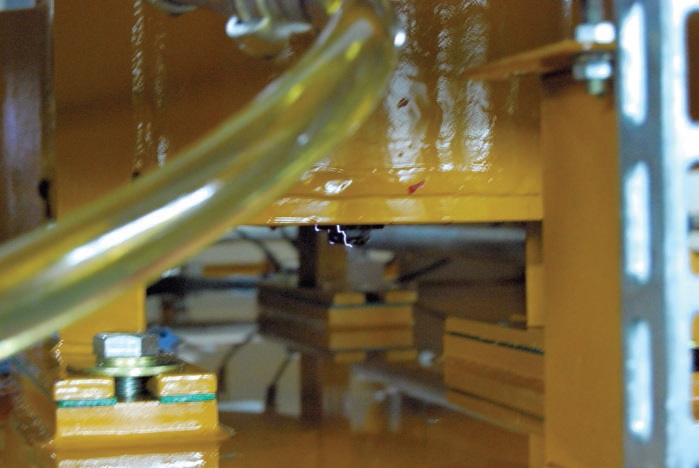 Figure 2. Electrostatic discharges (arcing) recorded on a turbine lube system filter housing with our first-generation sensor (Stat-Stick®).
TLT: What can you tell us about your latest discovery?
Duchowski:
Figure 2. Electrostatic discharges (arcing) recorded on a turbine lube system filter housing with our first-generation sensor (Stat-Stick®).
TLT: What can you tell us about your latest discovery?
Duchowski: When you examine the triboelectric series, glass, the material most commonly employed in filter cartridge construction, sits at the very top of its positive end. In contrast, polypropylene, a long-chain hydrocarbon molecule, basically a “solid oil,” sits near the bottom, very close to the negative end. It is therefore not surprising that in nearly all typical hydraulic and lubricating applications (say easily >95%), the filter element acquires a positive charge whereas the fluid a negative charge.
Well, consistent with my
never the same day twice experience, just earlier this year we have discovered a very interesting case (forklift operating in a meat freezer) where the exact opposite is true. Although we have previously—and only in passing—had some inclination of such occurrences, the crudeness of our early experimental apparatus and rather unwieldy measurement techniques would not allow us to establish this case with certainty. With our current measurement tools and rather sophisticated measurement methodology, the evidence is unequivocal. We have definitely recorded several instances where the ESC/D of reverse polarity has been clearly, repeatably and reproducibly documented (
see Figures 3-8).
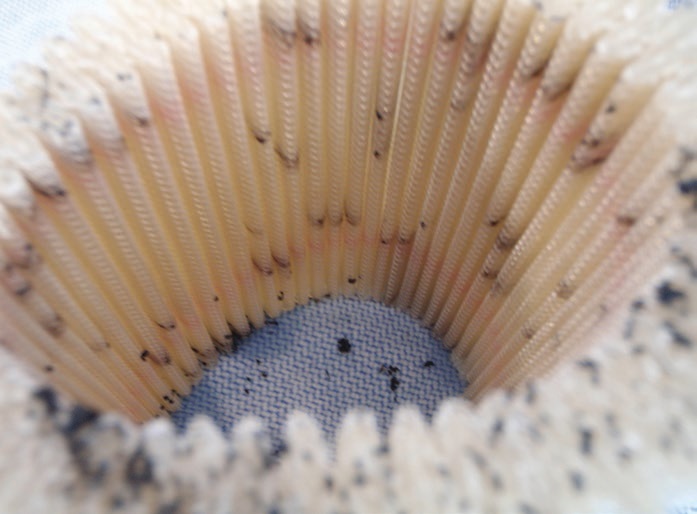 Figure 3. Characteristic ESD burn marks on the filter mesh pack.
Figure 3. Characteristic ESD burn marks on the filter mesh pack.
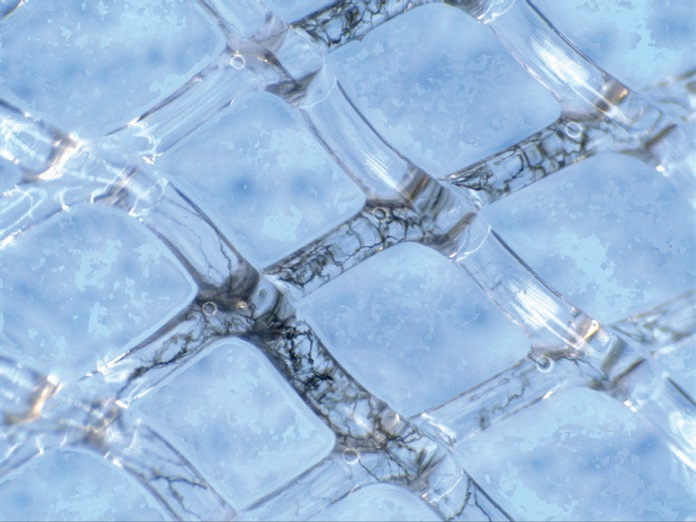 Figure 4. Characteristic ESD burn marks on the polyamide support mesh. (Figure courtesy of Irmhild Klaes.)
Figure 4. Characteristic ESD burn marks on the polyamide support mesh. (Figure courtesy of Irmhild Klaes.)
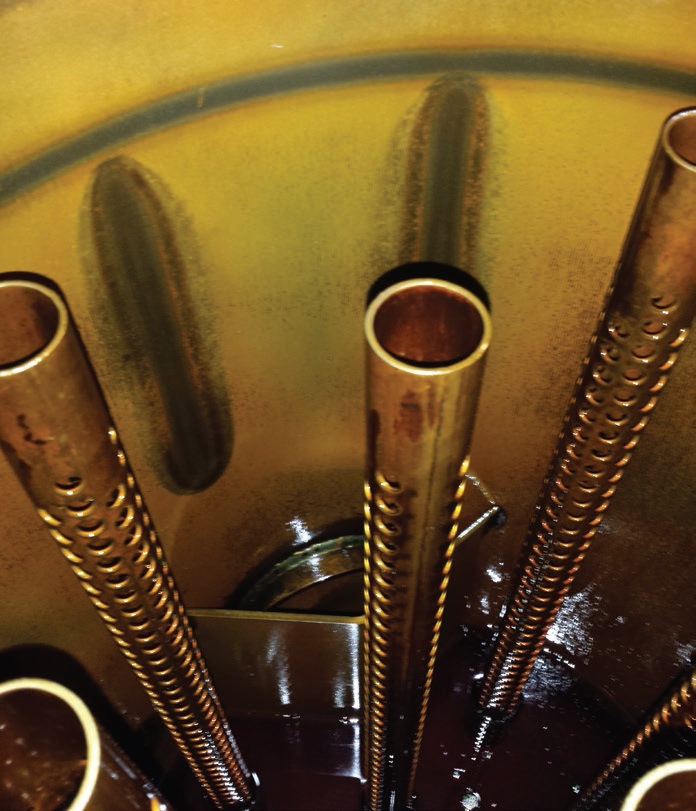 Figure 5. ESD damage to the filter housing.
Figure 5. ESD damage to the filter housing.
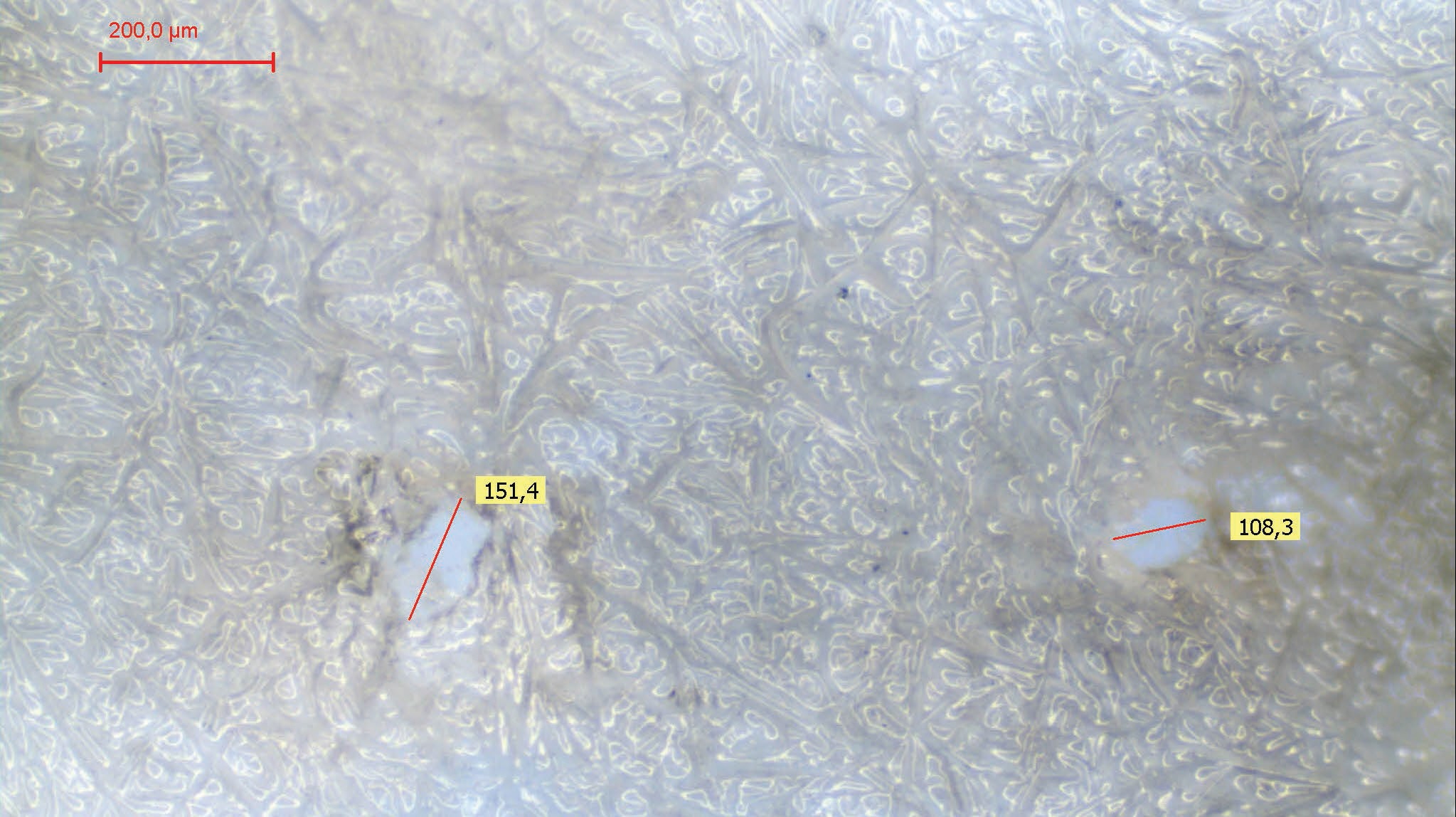 Figure 6. Main filter media layer showing damage as a result of electrostatic discharges (>100 µm holes burnt through it). (Figure courtesy of Irmhild Klaes.)
Figure 6. Main filter media layer showing damage as a result of electrostatic discharges (>100 µm holes burnt through it). (Figure courtesy of Irmhild Klaes.)
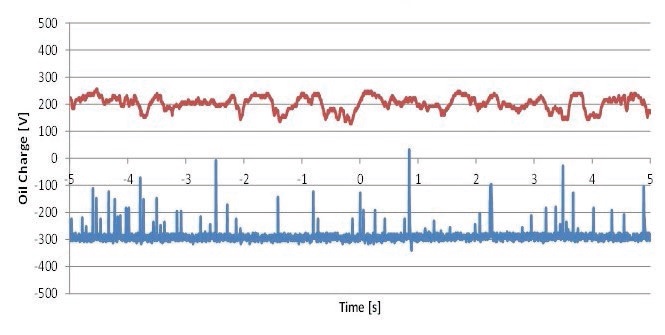 Figure 7. Gas turbine lubricating system. Blue: Normal oil charging behavior with evident ESD arcing. Red: Reverse polarity charging behavior; no ESD arcing.
Figure 7. Gas turbine lubricating system. Blue: Normal oil charging behavior with evident ESD arcing. Red: Reverse polarity charging behavior; no ESD arcing.
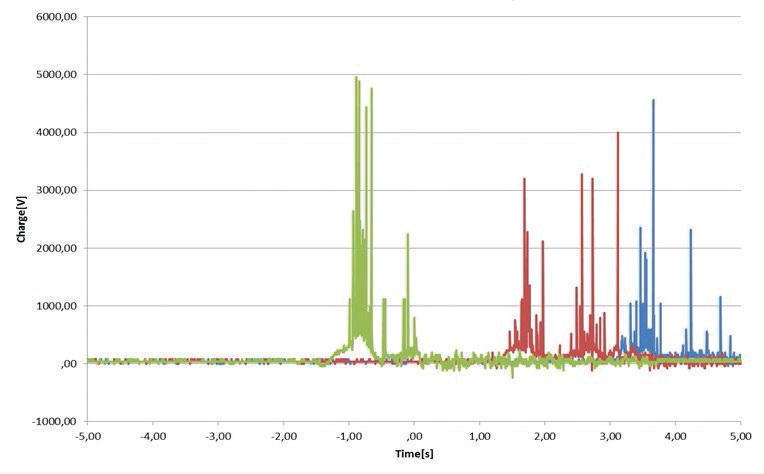 Figure 8. Fork lift hydraulic system. All three traces show reverse polarity charging behavior with severe ESD arcing evident.
TLT: What do you foresee as the next big challenge?
Duchowski:
Figure 8. Fork lift hydraulic system. All three traces show reverse polarity charging behavior with severe ESD arcing evident.
TLT: What do you foresee as the next big challenge?
Duchowski: Based on the available data and performance characteristics, it would appear that we have reached the end when it comes to filter media prepared by depositing a mixture of glass fibers on some substrate (
see Figure 6). There is only so much you can do when it comes to mixing of fibers of different diameters and adjusting the density of the deposited matrix. The triangle with filtration ratio, differential pressure and the dirt-holding capacity at its apexes has been stretched to its limits, and we have now reached the point of diminishing returns. So, sadly, we are now faced with being totally cost driven or with endowing the filter media and filter elements with some additional functionality that bring particular advantage to the application and the operator. The first proposition of cost reduction requires the employment of alternative materials with lower initial cost but without sacrificing the (rather outstanding) performance characteristics of the glass fibers.
The second proposition of imparting additional functionalities to the filter media is far more interesting as it hinges on what is really quite fundamental materials science. Of course, other substrates (i.e., those intended to replace the glass fiber) also can lend themselves to these modifications (i.e., the changes in the intrinsic natural characteristics of the raw material), for example, making an intrinsically hydrophobic material such as polypropylene hydrophilic.
Basically what is required is a fundamentally new approach to filtration and separation processes where we must think beyond our current model that treats the working fluid as an inert substance, non-interacting with the filter media and containing a suspension of finely divided rocks that likewise do not interact with the fluid, the filter media or themselves—or basically a Boltzmann gas model approach to filtration. We have finally got to realize that our world is, in fact, not just that simple.
You can reach Dr. John Duchowski at john.duchowski@hydacusa.com.